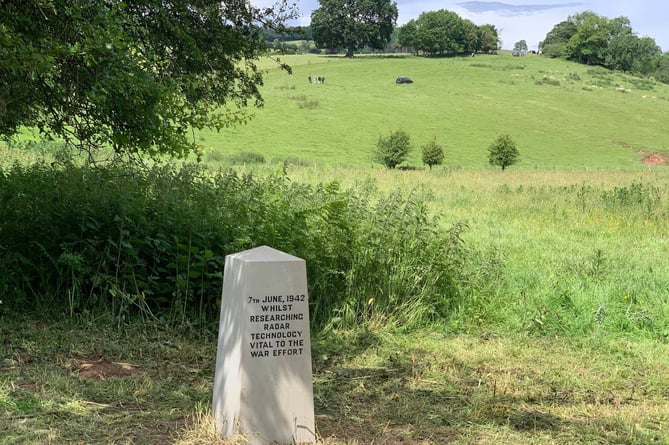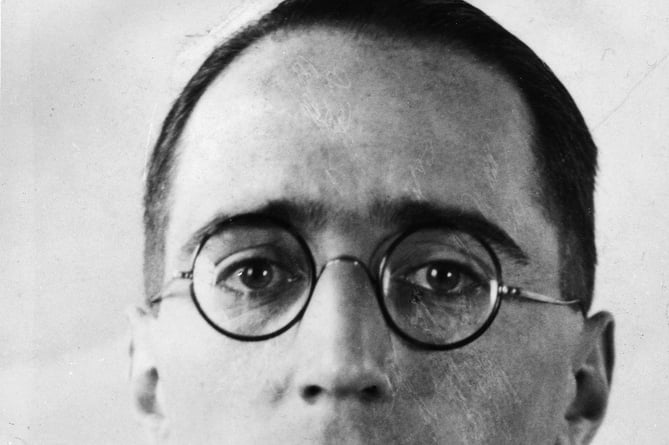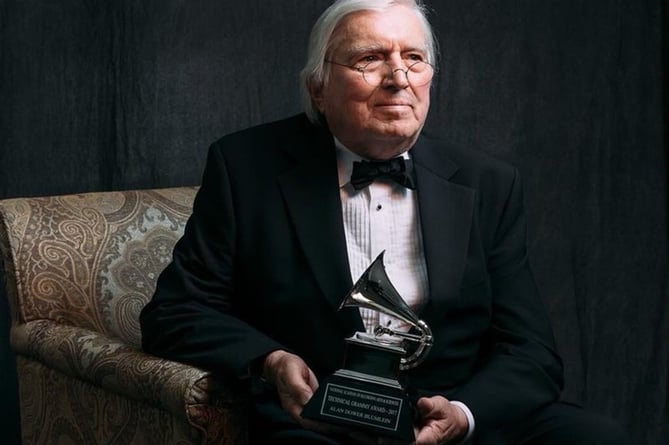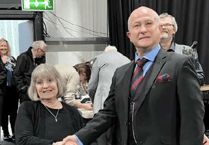THE son of a science genius, whose father died in a WWII Wye Valley plane crash while testing a secret new radar system, has died at the age of 87.
Simon Blumlein attended the 2019 unveiling of the Wyeside memorial to radar and sound technology pioneer Alan Blumlein and 10 other men near Welsh Bicknor in 2019, after a £5,000 fundraising campaign to honour them.

EMI, who Alan Blumlein worked for, said in tribute to his son, who was just six when his father died: “It is with great sadness that we learned last week of the passing of Simon Blumlein after a brief illness. He was 87.
“Simon was an incredible friend to and supporter of the EMI Archive Trust. If the name ‘Blumlein’ is familiar to followers of the Trust it is because Simon was the eldest son of Alan Dower Blumlein, one of the UK’s greatest and most consequential inventors and technologists of the 20th Century during his time working for EMI in the 1930s and 1940s.

“Stereo sound, electric TV, airborne radar and much more all only happened because of the genius that was Alan Dower Blumlein.
“Whether it was generously agreeing to help us with producing a promotional video or on countless other occasions, Simon was a tireless advocate for ensuring his remarkable father achieved the recognition he was due – a goal we at the Trust still feel has very much not yet been fulfilled and something we are committed to continuing to keep pushing for.”
The terrible accident on the afternoon of June 7, 1942, saw four scientists and seven air crew perish when their ‘radar laboratory’-converted Halifax V9977 bomber crashed below Coppett Hill on the Courtfield Estate, between Welsh Bicknor and Lydbrook, on the afternoon of June 7, 1942.
It was one of Britain’s worst ever military test flight tragedies, but despite local people knowing that a plane had crashed, the true story didn’t come out until decades later, owing to Winston Churchill declaring it top secret.
The plane involved in the pionering radar work, piloted by Pilot Officer Douglas Berrington, had taken off from RAF Defford in Worcestershire, flown out down the Brstol Channel as far as Barry, and was returning over the Forest of Dean when it burst into flames at 15,000ft and plummeted to earth.
Alan Blumlein’s close colleague, radio astronomer Bernard Lovell – later knighted for his work at Jodrell Bank Observatory – gave up his seat to another scientist on the day of the ill-fated flight, and was affected by the tragedy for the rest of his life.
Sir Bernard – whose daughter Judy Spence attended the unveiling of the riverside memorial four years ago, alongside Simon Blumlein and his brother David – had the harrowing task of sifting through the wreckage on the night of the crash to recover the highly-secret cavity magnetron the plane had been carrying.
The death of Alan Blumlein, who was just 38, alongside EMI and Telecommunications Research Establishment (TRE) colleagues Cecil Oswald Browne, Frank Blythen and Geoffrey Spencer Hensby, robbed the Allies of a driving force in the top secret development of H2S airborne radar, which would be used to identify land targets and U-boats.
But his contribution finally came to light many years later, sparking a campaign to fund the Wyeside memorial where the crash happened.
In 2017, the family also received a posthumous Grammy technical award in New York for Alan’s services to sound recording.
Blumlein’s sons, Simon and David, and Mike Phillips, son of Flying Officer Algernon Phillips, lifted the Union Jack to unveil the memorial stone beside an oak tree at the 2019 ceremony.
And Simon poignantly told the gathering his mother Doreen had said while visiting the site: “If you have to die, this is a beautiful place.”




